Fleurs du Mal Magazine


literature & poetry # spoken word & live literature # Fatima Bhutto: Bollywood, K-Pop and Beyond # Part of London Literature Festival # 17 – 27 Oct 2019
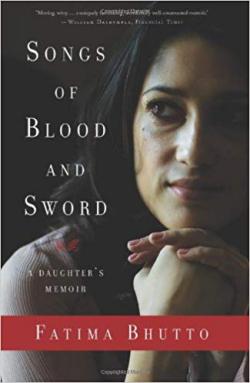 India’s Bollywood films, Turkish dizi soap opera and South Korean pop music: mass culture from the East is taking on Hollywood and finding a truly global audience.
India’s Bollywood films, Turkish dizi soap opera and South Korean pop music: mass culture from the East is taking on Hollywood and finding a truly global audience.
Hear from acclaimed author Fatima Bhutto about the vast cultural movement emerging from beyond the Western world.
Drawing on her book New Kings of the World: Dispatches from Bollywood, Dizi, and K-Pop, Bhutto speaks on the arbiters behind these cultural movements.
She examines how they interweave traditional values into urbanised settings and how they appeal to many millions.
From behind the scenes of Magnificent Century, Turkey’s biggest TV show, watched by upwards of 200 million people across 43 countries, to South Korea to see how ‘Gangnam Style’ became the first YouTube video with one billion views, Bhutto charts the extraordinary rise and reach of these cultural phenomena.
Bhutto was born in Kabul, Afghanistan, in 1982. She grew up in Syria and Pakistan. She is the author of five previous books, including The Shadow of the Crescent Moon which was longlisted in 2014 for the Baileys Women’s Prize for Fiction and highly acclaimed novel The Runaways.
Fatima Bhutto
21 Oct 2019 7:15 pm
Approximate run time: 90 mins
Run times may vary, find out more
where?
Purcell Room in Southbank Centre London
Bringing new resonance to timeless narratives, Southbank Centre’s London Literature Festival returns for its 13th year with an exploration of fairy tales for our times with today’s leading writers, thinkers and cultural observers. 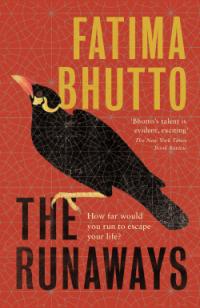
Over 11 days of talks, readings, poetry and performance, the festival features Elizabeth Day, Armistead Maupin, Brett Anderson, Heather Morris, Lemn Sissay, Anthony Daniels (C-3PO), Nikki Giovanni, Fatima Bhutto and Jung Chang.
The festival once again opens with Poetry International, Southbank Centre’s longest running festival, founded by Ted Hughes, former poet laureate, in 1967. This year follows the theme of disruption.
The Purcell Room in Queen Elizabeth Hall reopened in April 2018 following almost three years of refurbishment. With new improved facilities and acoustics, this intimate wood-panelled auditorium provides a platform for music and performance events, a variety of talks and debates, plus readings of classical and modern literature.
The world-renowned venue has played host to some of the biggest names of the 20th century and beyond, including David Bowie, Daniel Barenboim, Marianne Faithfull and Radiohead’s Jonny Greenwood.
Purcell Room is located in Queen Elizabeth Hall.
London Literature Festival
17 – 27 Oct 2019
poetry – spoken word & live literature
# website Queen Elizabeth Hall / Purcell Room
• fleursdumal.nl magazine
More in: - Book Stories, Archive A-B, Art & Literature News, AUDIO, CINEMA, RADIO & TV, Fatima Bhutto, Literary Events, Poetry International, REPRESSION OF WRITERS, JOURNALISTS & ARTISTS

Design Museum Den Bosch presenteert de eerste grote overzichtstentoonstelling van design van het Derde Rijk. De tentoonstelling Design van het Derde Rijk toont de enorme bijdrage van vormgeving aan de ontwikkeling van de kwaadaardige nazi-ideologie.
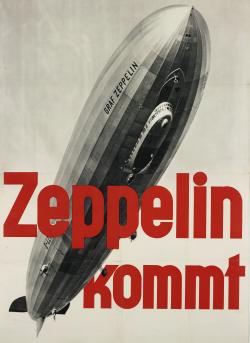 Met de Volkswagen Kever, de Olympische Spelen in 1936, de swastika en de films van Leni Riefenstahl en andere belangrijke stukken uit Nederland en Duitsland. Design van het Derde Rijk: waarom in Design Museum Den Bosch?
Met de Volkswagen Kever, de Olympische Spelen in 1936, de swastika en de films van Leni Riefenstahl en andere belangrijke stukken uit Nederland en Duitsland. Design van het Derde Rijk: waarom in Design Museum Den Bosch?
Musea zijn gewend om de goede kant van cultuur te zien. Juist design wordt vaak gepresenteerd als een bijdrage aan een betere wereld.
De geschiedenis van vormgeving bestaat daarom uit steeds terugkerende onderwerpen die het moreel juiste vertegenwoordigen.
Maar design reflecteert de wereld, met al zijn goede én slechte kanten. In de tentoonstelling Design van het Derde Rijk is de vormgeving een instrument in de handen van het ultieme kwaad.
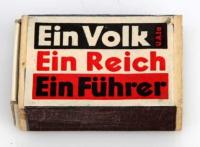 De nazi’s waren meesters in het inzetten van vormgeving om hun doel te bereiken; massa’s mensen wisten ze ermee aan hun kant te krijgen en te onderdrukken. Design Museum Den Bosch is een designmuseum nieuwe stijl met een kritische opstelling. Als je volmondig dit nooit weer wilt kunnen zeggen, moet je de moeite nemen te analyseren hoe de processen van beïnvloeding destijds werkten. Dat is wat deze tentoonstelling doet.
De nazi’s waren meesters in het inzetten van vormgeving om hun doel te bereiken; massa’s mensen wisten ze ermee aan hun kant te krijgen en te onderdrukken. Design Museum Den Bosch is een designmuseum nieuwe stijl met een kritische opstelling. Als je volmondig dit nooit weer wilt kunnen zeggen, moet je de moeite nemen te analyseren hoe de processen van beïnvloeding destijds werkten. Dat is wat deze tentoonstelling doet.
Het design van het Derde Rijk was in grondslag tegenstrijdig. De tentoonstelling Design van het Derde Rijk is daarom ingedeeld aan de hand van verschillende tegenstellingen.
Zuiverheid stond centraal, wat betekende dat verschillende bevolkingsgroepen als Joden, homo’s en zigeuners dienden te worden vernietigd. Het nazisme bedacht en steunde op een eigen geschiedenis, maar was tegelijkertijd fanatiek gericht op de toekomst. Het was vervuld van romantiek, maar ook geobsedeerd door moderne technologie.
Naar buiten toe liet het nazisme een verleidelijk beeld zien van voorspoed en zorgeloos vertier, terwijl in 1933 al de eerste concentratiekampen werden opgezet. Samen laten deze paradoxen zien hoe het nazisme binnen twaalf jaar eerst tot een enorme ontwikkeling en vervolgens tot een daverende ineenstorting kwam. En op welke manier design in dat proces een doorslaggevende rol speelde.
De tegenstellingen die het nazisme kenmerken worden getoond aan de hand van een ruime selectie objecten uit Nederlandse en Duitse musea en verzamelingen. Zo zijn er architectuurelementen en meubels te zien uit het Haus der Deutschen Kunst en de Rijkskanselarij.
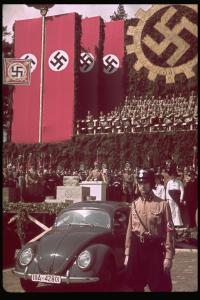 De ontwerpen tonen hoe de nazi’s teruggrepen op de classicistische vormgeving als machtsvertoon en symbool voor een nieuwe Duitse cultuur. De vele tijdschriften die opgenomen zijn in de tentoonstelling geven een beeld van het ver doorgevoerde doelgroepenbeleid van de nazi’s. Van moeders tot soldaten, van jonge meisjes tot internationale bezoekers, iedereen werd op een eigen manier aangesproken. Instructieboeken laten zien hoe precies ieder onderdeel van de beeldvorming rond de nazi’s werd ontworpen. Bij de massabijeenkomsten werd niets aan het toeval over gelaten.
De ontwerpen tonen hoe de nazi’s teruggrepen op de classicistische vormgeving als machtsvertoon en symbool voor een nieuwe Duitse cultuur. De vele tijdschriften die opgenomen zijn in de tentoonstelling geven een beeld van het ver doorgevoerde doelgroepenbeleid van de nazi’s. Van moeders tot soldaten, van jonge meisjes tot internationale bezoekers, iedereen werd op een eigen manier aangesproken. Instructieboeken laten zien hoe precies ieder onderdeel van de beeldvorming rond de nazi’s werd ontworpen. Bij de massabijeenkomsten werd niets aan het toeval over gelaten.
De bruiklenen komen onder andere van het Deutsches Historisches Museum in Berlijn, het Münchner Stadtmuseum, het Haus der Kunst en het Institut für Zeitgeschichte in München, het Eyewitness Museum in Beek en het Nationaal Militair Museum in Soesterberg.
Bij de tentoonstelling is er een uitgebreid publieksprogramma, met activiteiten voor alle doelgroepen.
De tentoonstelling participeert in de herdenking 75 jaar vrijheid.
Design Museum Den Bosch presenteert
Design van het Derde Rijk
7 september 2019 t/m 19 januari 2020
Design Museum Den Bosch – De Mortel 4 – 5211 HV – ‘s-Hertogenbosch
# meer op website design museum: https://designmuseum.nl/
Design Museum Den Bosch:
Design van het Derde Rijk
• fleursdumal.nl magazine
More in: *War Poetry Archive, Art & Literature News, AUDIO, CINEMA, RADIO & TV, Design, Exhibition Archive, Holocaust, PRESS & PUBLISHING, REPRESSION OF WRITERS, JOURNALISTS & ARTISTS
Daniil Charms die in werkelijkheid Daniil Ivanovic Juvacov heette, werd in 1905 in St. Petersburg geboren, waar hij in 1942 stierf.
In 1926 richtte hij met Aleksandr Vvdenski en Nikolaj Zabolotski de avantgardegroep Oberiu (Objeedinenije realnogo iskoesstva – ‘Vereniging van reële kunst’) op. Hun doel was een artistieke revolutie door te voeren, parallel aan de politieke revolutie.
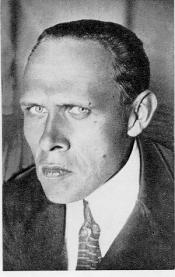 Alhoewel ze het woord niet gebruikten pleitten ze voor absurde kunst. De doodsteek kwam toen ze in 1930 beschuldigd werden van protest tegen de dictatuur van het proletariaat. Charms werd in 1931 veroordeeld tot verbanning naar Koersk, waarvandaan hij in 1933 terugkeerde.
Alhoewel ze het woord niet gebruikten pleitten ze voor absurde kunst. De doodsteek kwam toen ze in 1930 beschuldigd werden van protest tegen de dictatuur van het proletariaat. Charms werd in 1931 veroordeeld tot verbanning naar Koersk, waarvandaan hij in 1933 terugkeerde.
Hij legde zich toen, omdat zijn werk voor volwassenen niet-publicabel was geworden, toe op kinderliteratuur.
Uiteindelijk werd hij in 1941, tijdens het beleg van het Leningrad (tot 1924 Petersburg genoemd), weer gearresteerd en krankzinnig verklaard. Charms stierf begin 1942, vermoedelijk uitgehongerd, in de psychiatrische afdeling van de gevangenis Kresty in Leningrad. Hij heeft geen graf.
Na zijn dood werden zijn manuscripten teruggevonden. In de jaren zestig begonnen publicaties van dit onuitgegeven werk te verschijnen, aanvankelijk vooral in het Westen. Op grond hiervan kreeg Charms algauw de reputatie van Ruslands belangrijkste absurdistische auteur.
# meer informatie op website: https://www.uitgeverijvleugels.nl/
daniil charms
De dappere egel
2019
60 pagina’s
vertaling: jan paul hinrichs
isbn 978 90 78627 82 1
uitgeverij vleugels
€ 21,80
uitgeverij vleugels
van ’t hoffstraat 27
2665 jl bleiswijk
t 06 30 49 77 49
email: info@uitgeverijvleugels.nl
website: https://www.uitgeverijvleugels.nl/
# more books
daniil charms
De dappere egel
• fleursdumal.nl magazine
More in: - Book News, - Bookstores, Archive C-D, Archive C-D, Archive K-L, Kharms (Charms), Daniil, Modernisme, Psychiatric hospitals, REPRESSION OF WRITERS, JOURNALISTS & ARTISTS, TRANSLATION ARCHIVE
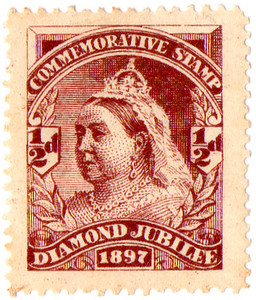
The Philatelist*
(*A man who collects stamps cares for nothing else in the world.)
” O come,” said Music, “come with me ;
To Adelina Patti list;
Melt in her magic melody ” —
“I shan’t !” quoth the Philatelist.
“Come,” said the Gourmand, “come with me.
And try the varied Gatti-list;
I prithee, try Gastronomy” —
“I won’t!” quoth the Philatelist.
” Come,” said the Eightsman, ” come with me”,
And to the merry rattle list;
“Come, join our cheery crew, and we ” —
” Please go!” quoth the Philatelist.
” Come”, said the Farmer, ” come with me”.
And to my lowing cattle list :
“They’re’ slowly winding o’er the lea ” —
” Let them !” quoth the Philatelist.
“Come,” said the Mother, “come with me,
And to my cherub’s prattle list ;
Come, take the babe upon thy knee” —
“No, thanks!” quoth the Philatelist
“Come,” said the Warrior, “come with me,
And to the roar of battle list;
Come, join our valiant company” —
“Not me!” quoth the Philatelist.
“Come,” said Society, “with me,
And to my tittle-tattle list;
“Come, try the World, the Flesh, the D— “
“Get out!” quoth the Philatelist.
Montague Horatio Mostyn Turtle Pigott
(1865–1927)
The Philatelist (Poem)
• fleursdumal.nl magazine
More in: Archive O-P, Archive O-P, Mostyn Turtle Pigott

La nature
La terre est de granit, les ruisseaux sont de marbre ;
C’est l’hiver ; nous avons bien froid. Veux-tu, bon arbre,
Être dans mon foyer la bûche de Noël ?
— Bois, je viens de la terre, et, feu, je monte au ciel.
Frappe, bon bûcheron. Père, aïeul, homme, femme,
Chauffez au feu vos mains, chauffez à Dieu votre âme.
Aimez, vivez. — Veux-tu, bon arbre, être timon
De charrue ? — Oui, je veux creuser le noir limon,
Et tirer l’épi d’or de la terre profonde.
Quand le soc a passé, la plaine devient blonde,
La paix aux doux yeux sort du sillon entr’ouvert,
Et l’aube en pleurs sourit. — Veux-tu, bel arbre vert,
Arbre du hallier sombre où le chevreuil s’échappe,
De la maison de l’homme être le pilier ? — Frappe.
Je puis porter les toits, ayant porté les nids.
Ta demeure est sacrée, homme, et je la bénis ;
Là, dans l’ombre et l’amour, pensif, tu te recueilles ;
Et le bruit des enfants ressemble au bruit des feuilles.
— Veux-tu, dis-moi, bon arbre, être mât de vaisseau ?
— Frappe, bon charpentier. Je veux bien être oiseau.
Le navire est pour moi, dans l’immense mystère,
Ce qu’est pour vous la tombe ; il m’arrache à la terre,
Et, frissonnant, m’emporte à travers l’infini.
J’irai voir ces grands cieux d’où l’hiver est banni,
Et dont plus d’un essaim me parle en son passage.
Pas plus que le tombeau n’épouvante le sage,
Le profond Océan, d’obscurité vêtu,
Ne m’épouvante point : oui, frappe. — Arbre, veux-tu
Être gibet ? — Silence, homme ! va-t’en, cognée !
J’appartiens à la vie, à la vie indignée !
Va-t’en, bourreau ! va-t’en, juge ! fuyez, démons !
Je suis l’arbre des bois, je suis l’arbre des monts ;
Je porte les fruits mûrs, j’abrite les pervenches ;
Laissez-moi ma racine et laissez-moi mes branches !
Arrière ! homme, tuez, ouvriers du trépas,
Soyez sanglants, mauvais, durs ; mais ne venez pas,
Ne venez pas, traînants des cordes et des chaînes,
Vous chercher un complice au milieu des grands chênes !
Ne faites pas servir à vos crimes, vivants,
L’arbre mystérieux à qui parlent les vents !
Vos lois portent la nuit sur leurs ailes funèbres.
Je suis fils du soleil, soyez fils des ténèbres.
Allez-vous-en ! laissez l’arbre dans ses déserts.
A vos plaisirs, aux jeux, aux festins, aux concerts,
Accouplez l’échafaud et le supplice ; faites.
Soit. Vivez et tuez. Tuez, entre deux fêtes,
Le malheureux, chargé de fautes et de maux ;
Moi, je ne mêle pas de spectre à mes rameaux !
Janvier 1843.
Victor Hugo
(1802-1885)
La nature
(Poème)
Les Contemplations
• fleursdumal.nl magazine
More in: Archive G-H, Archive G-H, Hugo, Victor, Victor Hugo
A smart and highly readable exploration of why we think and do bad things.
 Dr Julia Shaw shows us that the same dispositions that make us capable of heinous crimes may also work to our advantage. And, if evil is within all of us, should it be said to exist at all?
Dr Julia Shaw shows us that the same dispositions that make us capable of heinous crimes may also work to our advantage. And, if evil is within all of us, should it be said to exist at all?
In Making Evil, Shaw uses a compelling mix of science, popular culture and real life examples to break down timely and important issues. How similar is your brain to a psychopath’s? How many people have murder fantasies? Can A.I. be evil? Do your sexual proclivities make you a bad person? Who becomes a terrorist?
Dr Julia Shaw is a scientist in the Department of Psychology at University College London (UCL). Her academic work, teaching and role as an expert witness have focused on different ways of understanding criminal behaviour. Dr Shaw has consulted as an expert on criminal cases, delivered police-training and military workshops, and has evaluated offender diversion programs. She is also the co-founder of Spot, a start-up that helps employees report workplace harassment and discrimination, and employers take action. Her work has been featured in outlets such as CNN, the BBC, the New Yorker, WIRED, Forbes, the Guardian and Der Spiegel.
Making Evil: The Science Behind Humanity’s Dark Side
Dr Julia Shaw (Author)
Publisher: Canongate Books
Main edition (7 Feb. 2019)
Language: English
ISBN-10: 1786891301
ISBN-13: 978-1786891303
Hardcover: 320 pages
Feb 2019
Product Dimensions: 14.4 x 3 x 22 cm
# more books
Making Evil
Dr Julia Shaw
fleursdumal.nl magazine
More in: - Book News, - Book Stories, - Bookstores, Archive S-T, AUDIO, CINEMA, RADIO & TV, CRIME & PUNISHMENT, DRUGS & DISEASE & MEDICINE & LITERATURE, Natural history
Robert Lundquist was one of the rising stars of the Santa Cruz renaissance. By the early 1970s he was published in the Paris Review, anthologized in Raymond Carver’s magazine Quarry West, and listed in Rolling Stone magazine’s ‘Best 100 American Poets.’ This is Lundquist’s first major work. Discover a lost genius in these pages.
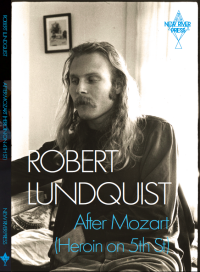 These poems were written in bursts over five decades. From 1969 to 1973, from 1980 to 1985, and from 2014 to 2018. Lundquist has an extraordinarily sensitive voice deeply engaged with the works of García Lorca, César Vallejo, Paul Celan, James Wight, Wallace Stevens, and John Ashbery. He addresses themes of love, loss, alcoholism, and emotional pain. He meditates on death, romance, and beauty with wild formal experiments and a visceral, surreal vision that is all his own.
These poems were written in bursts over five decades. From 1969 to 1973, from 1980 to 1985, and from 2014 to 2018. Lundquist has an extraordinarily sensitive voice deeply engaged with the works of García Lorca, César Vallejo, Paul Celan, James Wight, Wallace Stevens, and John Ashbery. He addresses themes of love, loss, alcoholism, and emotional pain. He meditates on death, romance, and beauty with wild formal experiments and a visceral, surreal vision that is all his own.
Central to his poetry is the changing spirit of Downtown L.A. The poet was raised and has lived his entire life there. His grandmother was a waitress in Union Station and his father an undercover policeman. Some darker chapters are inspired by a stint living next to skid row. The neighbourhoods of DTLA – the automobiles, diners, bars, porches, birds, and characters they contain – are evoked here with a noir melancholy and hallucinatory brilliance.
Until now most of this great work was available only in magazine archives, anthologies, and out-of-print chapbooks. Lundquist was previously led away from publishing by a rejection of the MFA culture that came to dominate American letters, struggles with addiction, the anxiety of influence, and a commitment to his psychoanalytic practice. A renewed interest in Lundquist’s work in recent years has resurrected his need to create, and we are all the better for it.
Robert Lundquist is a poet and practicing psychoanalyst in Los Angeles. Robert is also an avid blues harmonica player. His poems have appeared in such magazines as: The Nation, The Paris Review, Poetry Now, Kayak, and Quarry West. Robert was also one of five writers who taught poetry in the prison system in California, afterwards editing an anthology of prose and poetry by the writers in prison;, the anthology is entitled About Time II. When Robert is not with his wife, Nazare Magaz, or writing, he is seeing patients in his office above The Last Bookstore in Downtown Los Angeles. Robert knows a lot about the inner workings of Downtown Los Angeles as his Grandmother was a waitress at Union Station and his father was an under cover cop, chasing down heroin dealers when smack was coming through Flower Street. Included in his adventures in DTLA was entering Zen Center Los Angeles for two years when he was eighteen and in his adolescence taking harmonica lessons from George Smith in Watts. Robert began to write poetry at twenty and at twenty-one moved to Santa Cruz, California, to be a part of a literary renaissance in Santa Cruz where he was featured in the magazine Quarry West started by Ray Carver.
After Mozart (Heroin on 5th Street)
by Robert Lundquist (Author)
Language: English
ISBN-10: 199963103X
ISBN-13: 978-1999631031
Published: 2018
Format: Soft cover/Paperback
Publisher: New River Press Ltd
# more poetry
Robert Lundquist
fleursdumal.nl magazine
More in: - Book News, - Bookstores, Archive K-L, Art & Literature News
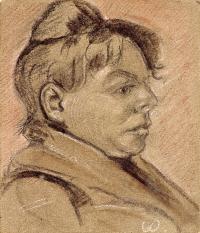
Menschenmateriaal.
Het is
maar bloed.
Het is
maar been.
Is ‘t heusch
maar stof?
Is ‘t stof
alleen?
Men schendt
natuur.
Men schendt
den geest.
Men is
geen mensch.
Men is
geen beest!
Werp maar
den mensch
in ‘t vuur!
Ga voort!
Maar ‘t is
ùw ziel,
die wordt
vermoord!
Agnita Feis
(1881 – 1944)
Uit: Oorlog. Verzen in Staccato (1916).
Menschenmateriaal
• fleursdumal.nl magazine
More in: *War Poetry Archive, Agnita Feis, Antony Kok, Archive E-F, De Stijl, Doesburg, Theo van, Feis, Agnita, Kok, Antony, Theo van Doesburg, Theo van Doesburg (I.K. Bonset), WAR & PEACE
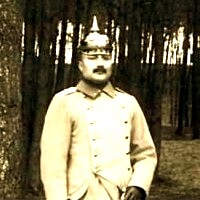
Mondschein
Bleich und müde
Schmieg und weich
Kater duften
Blüten graunen
Wasser schlecken
Winde schluchzen
Schein entblößt die zitzen Brüste
Fühlen stöhnt in meine Hand.
August Stramm
(1874-1915)
Mondschein, 1914
• fleursdumal.nl magazine
More in: *War Poetry Archive, Archive S-T, Expressionism, Stramm, August
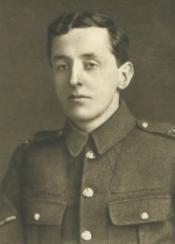
A Soldier’s Funeral
No splendid show of solemn funeral rite,
No stricken mourners following his bier,
No peal of organ reaching thro’ his night,
Is rendered him whom now we bury here.
‘Tis but a soldier stricken in the fight,
A youth who flung his passion into life,
Flung scorn at Death, fought true for Freedom’s might,
Till Death did close his vision in the strife.
No splendid rite is here – yet lay him low,
Ye comrades of his youth he fought beside,
Close where the winds do sigh and wild flowers grow,
Where the sweet brook doth babble by his side.
No splendour, yet we lay him tenderly
To rest, his requiem the artillery.
John William (Will) Streets
(1886 –1916)
A Soldier’s Funeral
• fleursdumal.nl magazine
More in: - Archive Tombeau de la jeunesse, Archive S-T, Streets, Will, WAR & PEACE
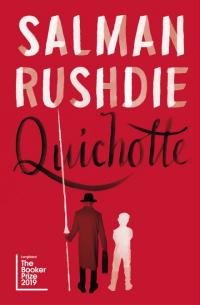 In a tour-de-force that is both an homage to an immortal work of literature and a modern masterpiece about the quest for love and family, Booker Prize-winning, internationally bestselling author Salman Rushdie has created a dazzling Don Quixote for the modern age.
In a tour-de-force that is both an homage to an immortal work of literature and a modern masterpiece about the quest for love and family, Booker Prize-winning, internationally bestselling author Salman Rushdie has created a dazzling Don Quixote for the modern age.
Inspired by the Cervantes classic, Sam DuChamp, mediocre writer of spy thrillers, creates Quichotte, a courtly, addled salesman obsessed with television, who falls in impossible love with the TV star Salman R. Together with his (imaginary) son Sancho, Quichotte sets off on a picaresque quest across America to prove worthy of her hand, gallantly braving the tragicomic perils of an age where ‘Anything-Can-Happen’. Meanwhile his creator, in a midlife crisis, has equally urgent challenges of his own.
Just as Cervantes wrote Don Quixote to satirise the culture of his time, Rushdie takes the reader on a wild ride through a country on the verge of moral and spiritual collapse, with the kind of storytelling magic that is the hallmark of his work. The fully realised lives of DuChamp and Quichotte intertwine in a profoundly human quest for love and a wickedly entertaining portrait of an age in which fact is so often indiscernible from fiction.
Salman Rushdie is the author of thirteen previous novels – Grimus, Midnight’s Children (for which he won the Booker Prize and the Best of the Booker), Shame, The Satanic Verses, Haroun and the Sea of Stories, The Moor’s Last Sigh, The Ground Beneath Her Feet, Fury, Shalimar the Clown, The Enchantress of Florence, Luka and the Fire of Life, Two Years, Eight Months, and Twenty-Eight Nights, and The Golden House – and one collection of short stories: East, West.
He has also published four works of non-fiction – Joseph Anton, The Jaguar Smile, Imaginary Homelands, and Step Across This Line – and co-edited two anthologies, Mirrorwork and Best American Short Stories 2008.
He is a member of the American Academy of Arts and Letters and a Distinguished Writer in Residence at New York University. A former president of PEN American Center, Rushdie was knighted in 2007 for services to literature.
Quichotte
Salman Rushdie (Author)
Imprint: Jonathan Cape
Published: 29/08/2019
ISBN: 9781787331914
Length: 416 Pages
Dimensions: 240mm x 37mm x 162mm
RRP: £20.00
LONGLISTED FOR THE BOOKER PRIZE 2019
# new books
Quichotte
by Salman Rushdie
• fleursdumal.nl magazine
More in: - Book News, - Book Stories, Archive Q-R, Art & Literature News, Don Quichotte, Salman Rushdie
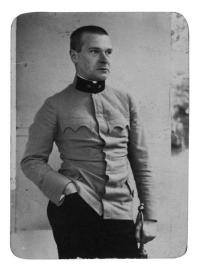
Nähe des Todes
O der Abend, der in die finsteren Dörfer der Kindheit geht.
Der Weiher unter den Weiden
Füllt sich mit den verpesteten Seufzern der Schwermut.
O der Wald, der leise die braunen Augen senkt,
Da aus des Einsamen knöchernen Händen
Der Purpur seiner verzückten Tage hinsinkt.
O die Nähe des Todes. Laß uns beten.
Jn dieser Nacht lösen auf lauen Kissen
Vergilbt von Weihrauch sich der Liebenden schmächtige Glieder.
Georg Trakl
(1887 – 1914)
Nähe des Todes
• fleursdumal.nl magazine
More in: - Archive Tombeau de la jeunesse, Archive S-T, Trakl, Georg, Trakl, Georg, WAR & PEACE
Thank you for reading Fleurs du Mal - magazine for art & literature